|
Location:
8km south of Nisa, N18, Alentejo. |
Grid Reference:
39.45� N 7.67� W. |
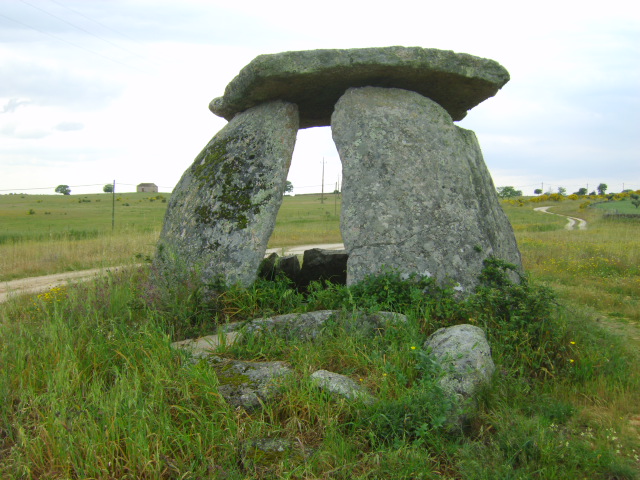
 Anta de San Gens:
(Dolmen).
Anta de San Gens:
(Dolmen).
The San Gens dolmen is located in an apparently isolated position, along a
track about 2km from the nearest town. The track to the dolmen is lined with
piles of quarried marble, dating back at least as far as the Romans.
The dolmen is situated
near the top of a small hill, offering a good view to the east but
nothing more than the crest of the hill to the west.
(Click
here for map of the site)
The
Dolmen is around 2-3m high and is topped by a capstone which now only rests
on two of the seven uprights (of which only five remain). Two of the
uprights have broken over time and this has left an opening which creates
the impression that the dolmen has a west-facing orientation, while the
small opening on the eastern side is actually the original opening. This
idea is strengthened by the fact that a stone lies on the floor inside the
dolmen which is probably a part of one of the broken stones.

There is a small circle of stones (hearth?), just in-front of
the gap on the eastern face (see right), although this may not be
contemporary.
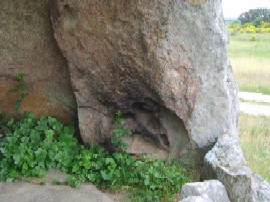
One of the stones has what appears to be the product of
natural erosion on its inside face, which has been subjected to a fire at
some time. It is interesting to note that this same
type of natural feature can be seen both in the
San Gens Necropole and in the stones at Tapad �o. The preferential selection of stones with
natural features was commonplace to the megalithic builders, perhaps adding
a magical quality to the atmosphere of the structure.
Orientation:
Assuming the entrance to be the gap on the eastern side, San Gens is
orientated approximately 20 �
south of true east,
a feature common to most Portuguese dolmens, and suggestive of an
orientation to the winter solstice sunrise (or spring full-moon).
Gallery of Images:
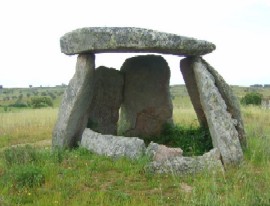
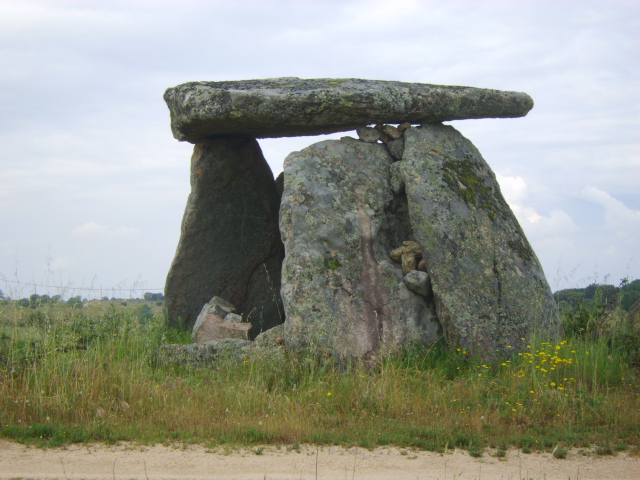
And in honour of the dolmen....
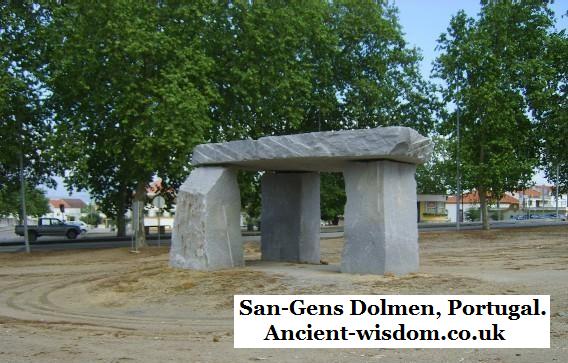
A new dolmen has been built in the town incidentally representing
the most recently erected dolmen in Portugal (Europe?).
(List of Prehistoric Portuguese sites)
(Portugal Homepage)
|